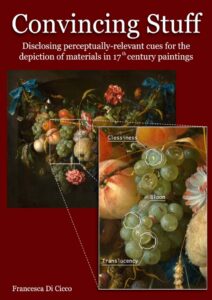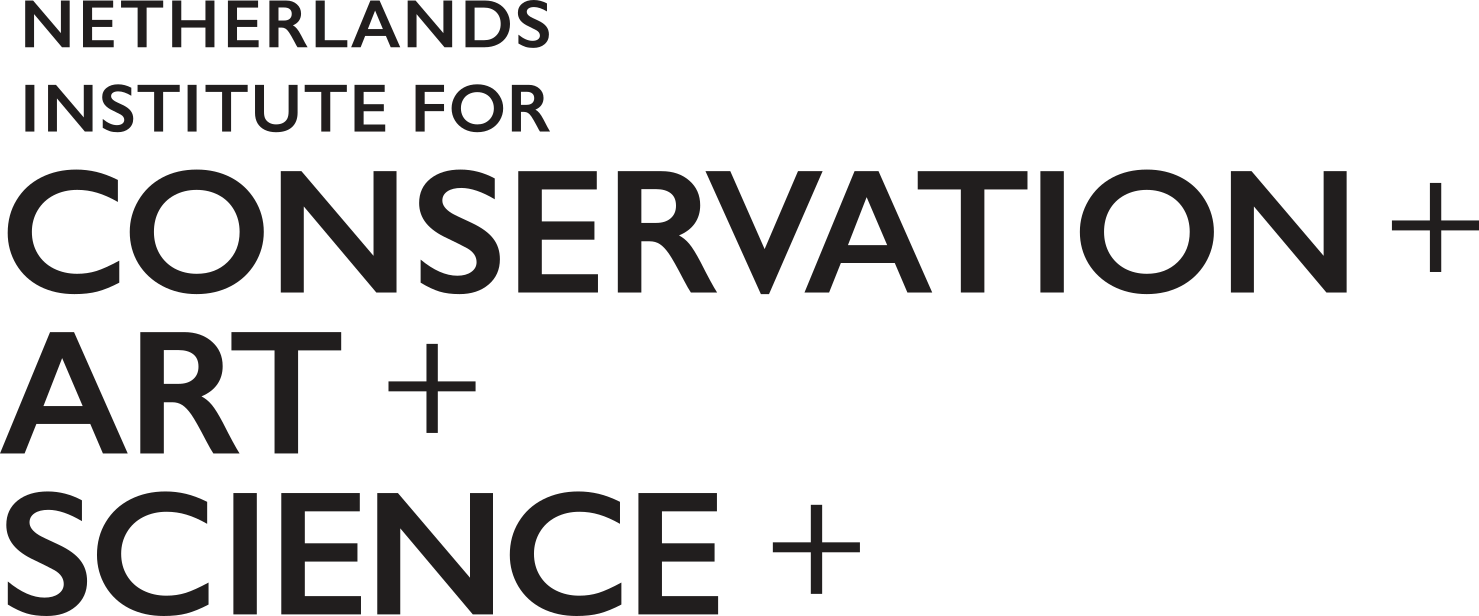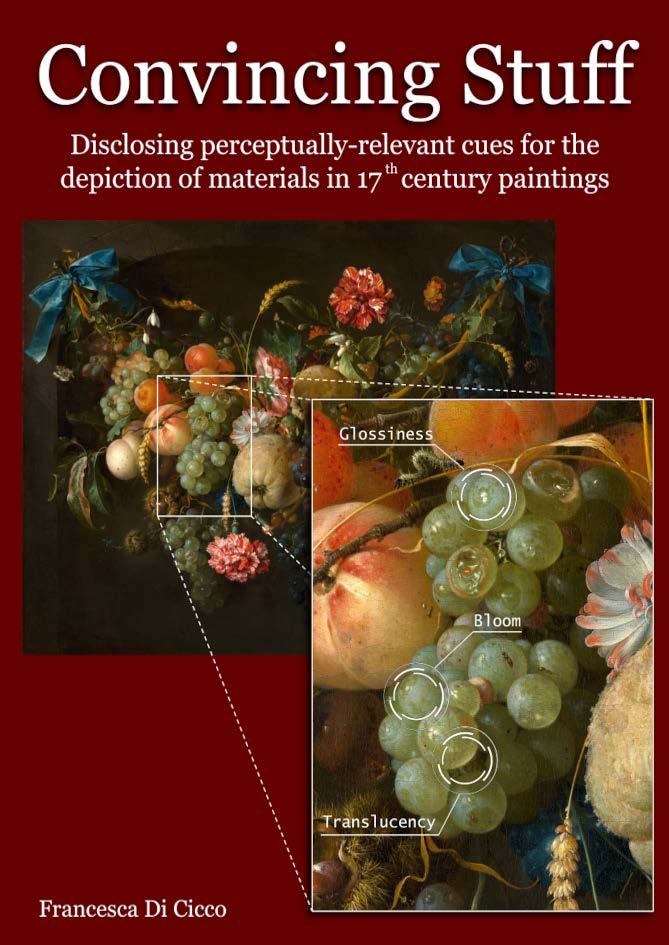
On Wednesday May 19th Francesca di Cicco will defend her PhD thesis, which is part of the NICAS project Recipes and Realities. The layman talk will start at 17.00 hrs and the defence at 17.30 hrs CET.
The title of her thesis is Convincing stuff: Disclosing perceptually-relevant cues for the depiction of materials in 17th century paintings.
You can download a digital copy of the dissertation from the TU Delft repository.
To join the event online, please click on this link that will be activated at 16.55 hrs. CET.
SUMMARY
This work explores convincing stuff depicted in 17th century paintings, with the primary aim of understanding their visual perception. ”Stuff” is the term first introduced by Edward Adelson in 2001 to differentiate materials from objects, and to call attention on the research gap in material perception. In an interesting parallel, the representation of materials in paintings constitutes a knowledge gap in art history as well. Both gaps have only recently been recognized and started to be addressed in their respective research fields.
In this work, representation and perception come together to create a virtuous circle in which the knowledge of painters about the representation of materials is used to understand the mechanisms of the visual system for material perception, and this is in turn used to explain the pictorial features that make the representation of materials so convincing.
The common thread used here to connect representation and perception, is ”The big world painted small”, a long-forgotten booklet of pictorial recipes written by the Dutch painter Willem Beurs in 1692. We argue that this book represents an index of key features for material perception, that means an index of image features that always work as perceptual cues regardless of the illumination and the viewing conditions of the depicted scene.
The main research objective of this dissertation is:
To understand the convincing depiction and perception of materials in 17th century paintings, connecting the image features found in paintings and listed by Beurs to their role as perceptual cues.
In order to achieve this objective, we employed a novel, interdisciplinary research approach, merging science of human and computer vision, technical art history, and the historical textual source of Beurs.
With the studies presented in this work, we show the mutual benefits that material perception and art history can gain from each other, and we provide practical examples of how the knowledge and methods from one field can be implemented into the other. Insights about material depiction and perception, derived by merging these two disciplines, find applications in all the fields that deal with appearance, from product design to computer graphics.

